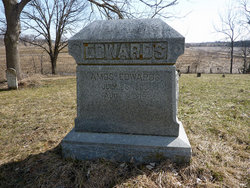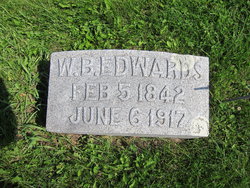| Description |
: |
Mrs. Mary C. Edwards Morand, who became the wife of Doctor George Kellogg in 1879, and is now continuing the work and manufacturing the remedies of her husband, was born in Illinois, and received her education in Pittsfield, and at the Jacksonville Seminary, of which Doctor Jaques was president. In early life she was much of an invalid, and for her own improvement read medicine, looking closely into the systems of allopathy and hydropathy, and taking also a course under the celebrated phrenologist, Professor O. S. Fowler, of New York, and afterwards studying with Doctor P. W. Shastid, of Pittsfield,...
Read More
|
Mrs. Mary C. Edwards Morand, who became the wife of Doctor George Kellogg in 1879, and is now continuing the work and manufacturing the remedies of her husband, was born in Illinois, and received her education in Pittsfield, and at the Jacksonville Seminary, of which Doctor Jaques was president. In early life she was much of an invalid, and for her own improvement read medicine, looking closely into the systems of allopathy and hydropathy, and taking also a course under the celebrated phrenologist, Professor O. S. Fowler, of New York, and afterwards studying with Doctor P. W. Shastid, of Pittsfield, Illinois. At the age of seventeen she was married to W. C. Morand, M. D. Of the two sons horn of this union, one is Doctor W. E. Morand, now a physician in Portland; and the other is Elmer E. Morand, a farmer at Silver Creek, Washington.
Coming to Oregon for her health in 1874, she was married five years later to Doctor George Kellogg, through whom she had received essential aid for consumption, from which she was suffering. She began at once the study of his system, and soon mastered the art of making his remedies. These medicines have gained a wide reputation on this coast, and are even in considerable demand in the Eastern states. The well-known home remedies, Balsam of Life, Family Liniment, Compound Cathartic Bitters, Golden Liniment for Catarrh, Golden Urinary Specific, Lung Balsam, and Cough Drops, are all compounded under her supervision, and are made almost exclusively from our native herbs and plants. Their great value has been recognized not only in a private way; but the management of the Mechanics' Fair of Portland bestowed upon them the blue ribbon, and awarded a diploma in 1886. It was the last wish of Doctor Kellogg that these specifics be kept in requisite quantity upon the market; and in this Mrs. Kellogg has most fully concurred
She lives in a delightful portion of the city of Portland, Oregon, commanding from the windows of her residence a bold view of the river and mountains, and has the substantial pleasures that come from active and beneficent employment. Her home is of rare attractions, and is adorned with artistic work of great beauty, deriving its interest not only from its unique design and construction, but from the fact that it is wholly her own. She prides herself that there is nothing else like it in the world, and that it is her peculiar invention. Being an extensive and enthusiastic traveler, with a penchant for gathering all manner of curiosities and mementoes from the places visited, she formed the idea of fashioning out of these materials designs so as to depict flowers and landscapes. One work of this kind is made wholly of shells, with a modicum of moss and miniatures of wild animals, and is a most entertaining souvenir of summer on the seashore. Another work of equal beauty is of crystal, the nucleus being beads which her children gathered long ago, and which she preserves in this graceful form. Another design is worked out in acorns, nuts, seeds, etc., another wholly in grasses, another in leaves, and various works in wax. All in all, this makes a most entertaining weft of the odd minutes of a very busy life, touching with beauty and art, and with the mystic attraction of the past, the entire home scene. The recreation thus suggested might be very well recommended to all lovers of the beautiful as something calculated to weave a thread of gold in the web of life, and to turn to brightness many minutes which might otherwise be given over to "the blues."
[source: History of the Pacific Northwest: Oregon and Washington. Portland, Oregon. North Pacific History Company, 1889.]
|




